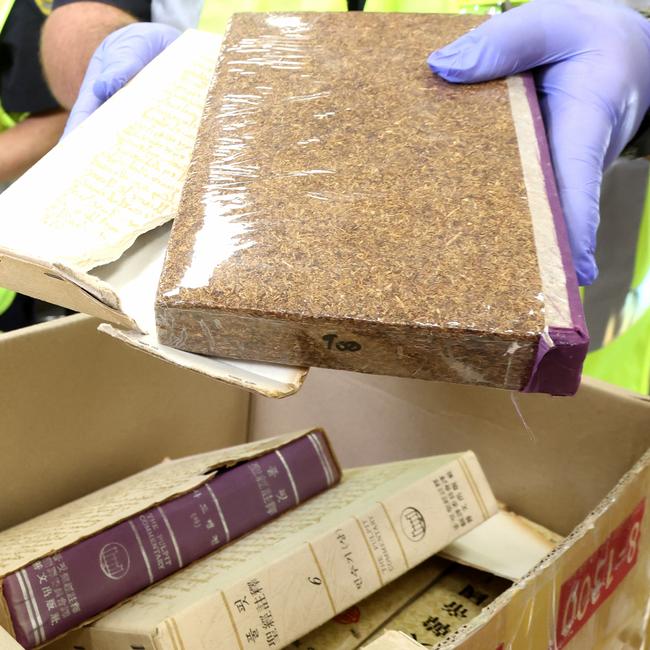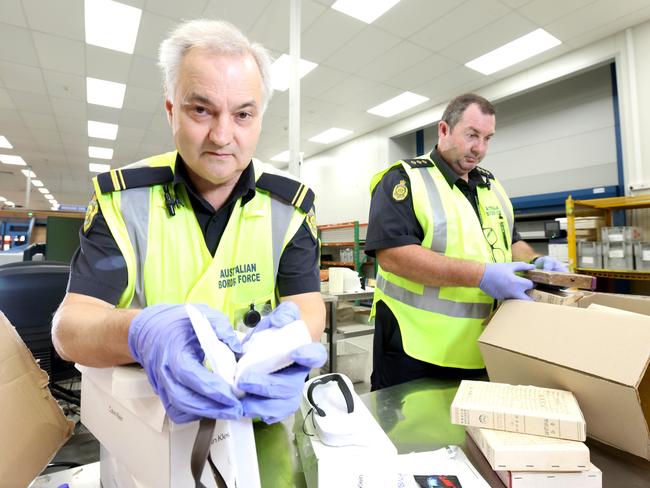Inside Border Force’s interception of drugs in the mail
Drug cartels are getting increasingly brazen and creative as they flood Queensland with record amounts of drugs. WATCH THE VIDEO
Police & Courts
Don't miss out on the headlines from Police & Courts. Followed categories will be added to My News.
Tonnes of drugs are being mailed into Australia every year, with Brisbane’s Australia Post headquarters at the forefront of the battle against drug cartels shipping their substances into the country.
During an exclusive tour of the Brisbane mailing facility, The Courier-Mail witnessed a number of suspicious packages seized by Australian Border Force officers being opened for the first time.
Some of the packages included methamphetamine concealed in the middle of Calvin Klein thongs and pouches of ketamine and tobacco bound into books.
The postal system in Australia has become a popular method for organised crime gangs to distribute drugs with criminals using a “scattergun approach” – sending a large quantity of small packages or addressing the packages to fake names and vacant blocks.
ABF Superintendent Scott Butters said officers had seen it all when it came to creative attempts at concealing illicit drugs.
Supt Butters said detections often started “pre-border”, with officers across the globe working to gain intelligence on organised crime syndicates and how they traffic drugs into Australia.
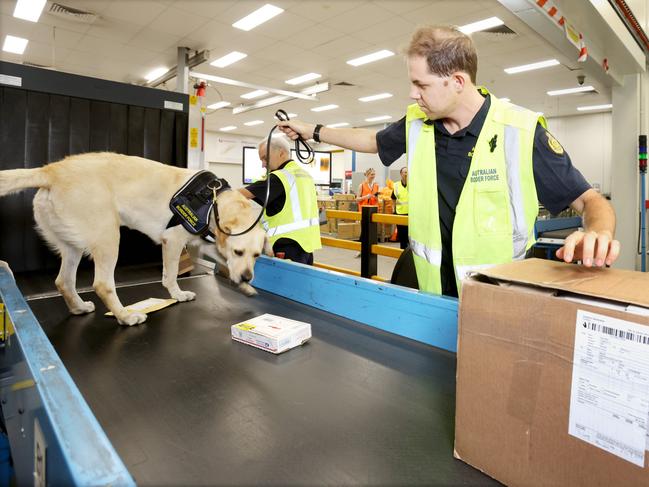
“We have officers located in key countries around the world, we also have incredibly well-built networks with law enforcement partners and other partners internationally that assists with (the ABF) getting information and intelligence from offshore,” he said.
“Cocaine is certainly popular, there’s no doubt about that … what we have seen post-Covid is also an increase in ketamine and meth, as well as tobacco and cannabis.
“There’s no doubt that we have seen parcels being sent to fake addresses, to parcel lockers, to vacant blocks of land … and even fake names.”
ABF officer John, who did not wish to give his last name, said illicit drugs were often concealed in common declarations such as candles, books, toys and chocolates.
He said criminals would trial different concealments in waves, and that declarations were often seasonal such as drugs in Christmas cards or cocaine in Easter eggs.
“One of the most interesting (concealments) we have seen is cocaine inside Lindt chocolate balls,” he said.
“They open up a box of Lindt chocolate balls, eat about half of them, and keep the wrappers …(they) put cocaine inside Glad Wrap (and) put it back in the (chocolate) wrappers, back in the box.

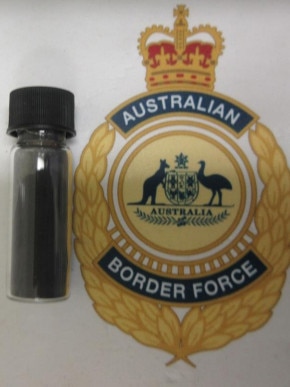
“They usually do about half of the chocolates … probably taking a 50/50 chance.
“Recently we have had a lot of drugs come through in candles … ketamine in candles.
“(Criminals) hollow out the candles, put the ketamine inside it and then they put a wax seal on top.”
As an experienced officer, John said he immediately noticed that the Calvin Klein beach slippers declaration appeared to be in a very large box despite the small number of thongs.
The thongs had been cut in half and impregnated with meth, but on closer inspection the sophisticated concealment had used thongs with Havaianas soles and Calvin Klein straps.
John revealed commercial packaging equipment was also used to conceal illicit drugs in food products such as sachets of curry powder.
He said officers had also seen blocks of cocaine pressed into the shape of a chocolate bar and then placed back into the chocolate wrapper.
“We have a lot of help from Intel … (they) tell us about the current concealments but often we will notice something unusual first and then we will tell intel,” he said.
Supt Butters said officers at the Brisbane facility are highly trained, informed by intelligence and have a wide range of sophisticated technology at their disposal such as X-rays and sniffer dogs.
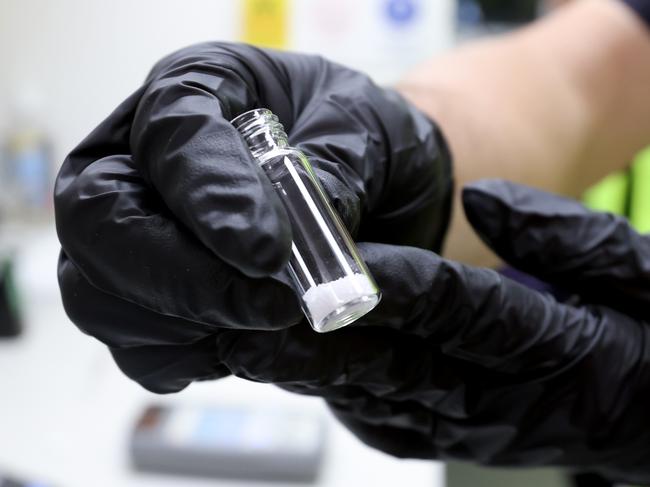
He said the majority of international mail in Australia was processed through Sydney and Melbourne, but about 80,000 to 100,000 items a week were diverted through the Brisbane facility for processing.
John said when packages of interest are screened by X-rays at the Brisbane facility, organic matter would often appear green, yellow or red.
“Most of the time, we are looking for organic matter,” he said.
He said other warning signs included packages that appear too large or too heavy, high-risk origins as well as packaging that resembles previous seizures.
“We have had a lot of seizures of tobacco with the same appearance – stripe tape, heavy stickers,” he said.
He said criminals had only recently started to conceal tobacco.
“In the past they have just sent (tobacco) through without even trying to conceal it … but now that it is being intercepted – (tobacco) is put in books, electronic cases, BBQs,” he said.
He said the sniffer dogs often work on the letters alone unless they are called in to “run over” a suspicious package.
“There’s just too many letters for us to X-ray,” John said.

John said cocaine was the most common illicit drug seized at the mailing facility, with at least a couple of seizures a day.
“We have had a lot of cocaine in the last 12 months … earlier in the year there was a lot of large shipments of cocaine coming through the mail, at the moment we are seeing a lot of smaller shipments,” he said.
John said large by mail standards was up to 2kg, but that officers also saw sachets with 1g or 2g. “They are very easy to conceal,” he said.
Supt Butters said Australia remained a lucrative market for organised criminals.
He said these syndicates threatened the safety of the community and compromised legitimate businesses and their supply chains.
“We have evolving targeting strategies at our international mail centres, which are contributing to these successes, including the use of Electronic Advanced Data to analyse mail articles before they arrive in Australia,” Supt Butters said.
Other interesting finds included cocaine concealed in water filters, amphetamine and ketamine in Lego, and meth in first aid backpacks.
John said once it was confirmed ABF officers had an item of interest, the Australian Federal Police would take on the investigation.
More Coverage
